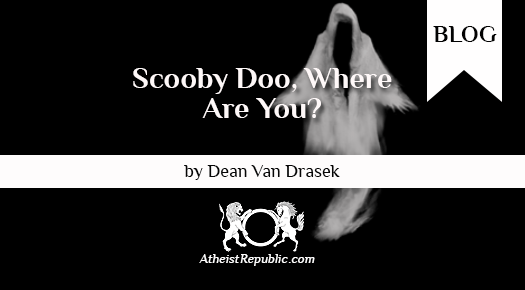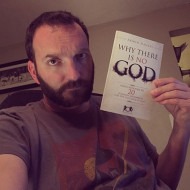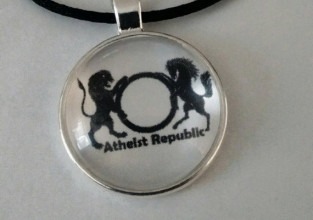
If you are not familiar with American pop culture from the 70s, you may want to skip this blog and go find a more entertaining and understandable cat video. You have been warned.
In case you haven’t seen it, the Scooby-Doo, Where are You! ran on America’s CBS broadcast network from 1969 until 1976, although it has had some reincarnations since then, but they did not always adhere to the original show’s style or message. The storyline was simple, and featured four teenage kids composed of Shaggy, an ever-hungry cowardly hippie, Daphne, the red-haired eye-candy, Velma, the slightly dumpy bespectacled intellectual, Fred, the blonde alpha male (who always drove the van the kids rode in), and of course Scooby-Doo, a great dane with an insatiable appetite who could communicate with the audience but was otherwise just a big dog. Scooby-Doo and Shaggy were the main characters in all the adventures.
The storyline didn’t vary much from show to show. Some mysterious event would occur which was often chalked up to supernatural causes (ghosts, monsters, curses, etc.) and the kids would stumble upon it, and then proceed to solve the mystery by exposing that it was really being perpetrated by some human in a mask or through some apparatus. As a kid, you came to know that the ghost was always someone in a sheet, and the monster was someone in a mask. Every time. It was education through popular entertainment, but education of a new sort – critical thinking about the supernatural.
Why the 60s and 70s were pretty awesome
In 1969 America, cartoons were only on TV on Saturday mornings, from about 7 AM until maybe noon or a bit later (at least, that was the case where I lived). There were three major networks that carried cartoons, ABC, NBC and CBS. Cartoons back then were remarkably like children’s cartoons of today, filled with talking animals, dynamite, heavy falling objects, gratuitous violence that everyone recovers from, and a periodic ability to defy the laws of physics - unless you are the Coyote in the Road Runner Show (1948-66) who is often thwarted in his efforts to dine on the tantalizingly tasty Road Runner due to gravity’s capricious application only to him.
The 60s and 70s in America were a remarkable time for free thinkers, who were casting off many of the conservative cultural assumptions that had settled down upon society in a comforting blanket of homogeneity and conformity since the emotional catastrophes that had wracked the Western world 1 . Ethnic minorities were fighting for equal rights, as were women, and popular atheism was starting to re-emerge from the stunted start it had at the end of the 19th Century.
Many people, but by no means all, or even a majority, started to question things like: why do people with dark skin pigmentation need to sit at a different part of the bus, eat at differing restaurants, stay at different hotels, and are prohibited from marrying people with lighter skin color. Why were certain people of one religious belief excluded from private clubs, which were otherwise open to anyone with enough wealth? Why were women excluded from certain professions, paid less than men for the same work, or expected to be subservient, even in the legal context, to their husbands’ wishes?
As you can see, in many ways America’s social condition of the early 60s was not so dissimilar from that of many other modern societies today. These conditions sometimes stemmed from religious dogma but more often from cultural legacies. Few if any major commentators ascribed America’s condition at the time to its religious beliefs, but many of these cultural norms were justified by people on religious grounds. But it was clearly a cultural problem, as other countries with a similar Protestant and Roman Catholic religious tradition did not have exactly the same problems nor were these problems unique to such societies. Indeed, many of these problems were (and sadly remain) widespread throughout the world regardless of a country’s majority religion.
In the 60s and 70s America witnessed political and judicial fights over access to birth control, rights to a divorce, inter-racial marriages, equal rights for ethnic minorities with darker skin pigmentation, equal rights for various religions, and rights to have an abortion. A major issue was the public opposition to the Vietnam War, with some even calling for charges of treason to be brought against the early protesters and draft-dodgers. Popular organized atheism rose again with the founding of the American Atheists in 1963, and the Supreme Court ruling against official school prayer. But people with more progressive views were frustrated by the unwillingness of those with entrenched convictions to be willing to change or even critically evaluate their beliefs in such things as the inherent inferiority of people with darker skin color, or of women, or of people with different or no religious beliefs.
But the progressives (at least in terms of domestic policy, if not foreign) were in the ascendant, with a leader in President Lyndon Johnson who, despite the political suicide it partly entailed for his Democratic Party in the Southern American States, promoted the Civil Rights Act of 1964, the various initiatives in the Great Society program (first enunciated at my alma mater, the University of Michigan) and the Voting Rights Act in 1965. All American Presidents since his time have been pale liberals or progressives by comparison. And while Nixon was a conservative, he did not try to roll-back the cultural changes that were wrought under the Johnson administration, and indeed the Nixon administration added to those advances in many ways and also pioneered environmental protections, abolished the military draft, and expanded labor law protections for minorities and women.
A partial solution to entrenched bigotry and superstition was education of the youth
These changes did not go unopposed, and the backlash was often brutal and violent (think of the 1968 Chicago Democratic Convention, and the 1970 Kent State shootings). Seeing that many older people were unlikely to be swayed by rational arguments supporting these social changes, people who were promoting change quickly realized was that it was much easier to address people’s prejudices when they were young and before their views became fully embraced. And the best way to reach kids, was through the medium of television.
The progressive movement in the 60s and 70s was not a movement of the majority. Even opposition to the Vietnam War only broke the 50% mark in polls starting in 1968, when the initial successes of the Tet Offensive exposed the pronouncements of America’s Generals as being of dubious value. In many States, the majority was firmly against equal rights for minorities, women, and other parts of the progressive agenda. But they were typically unorganized and unable to construct a convincing message countering the progressive agenda 2 .
The ground breaking Sesame Street produced by the Children’s Television Network, launched in 1969, focused on teaching children basic skills through a non-threatening medium of puppets interacting with human actors. Many social issues were addressed as well, but by example more than lecturing. In the program, women, and ethnic minority actors were treated the same as male Caucasian ones. Equality was taken as a given. Puppets were used to teach tolerance, compassion, and to give children pride in themselves and their accomplishments, which might otherwise be lacking in their daily lives. Mister Rogers’ Neighborhood, which started in 1968 on national networks had a similar message for young children, and also employed puppets for part of its program. A puppet can deliver a message neutral of its medium of transmission, which might otherwise be doubted due to the bias of the viewer against the ethnicity of the person delivering the message. Puppets lost human ethnicity, although they usually do retain a sexual identity.
Starting in 1973, the Schoolhouse Rock program also sought to educate children about certain political issues in a non-partisan, informative light by explaining how the American Government worked. And of course, there was Scooby-Doo with its message to kids that ghosts are not real. You could only resolve the mystery if you were willing to question the motive whenever someone was trying to scare or intimidate you. Just because someone told you something was true, there was no reason to believe it without finding evidence to support it. And of course, always carry plenty of Scooby Snacks when going on an adventure.
No one was taking on religion directly in children’s television; that was still too hot of a subject. But at the end of the day, what is the difference between the Holy Ghost and any other ghost? And daemons threatening possession were no different than daemons chasing you in an abandoned cemetery. Don’t be afraid (although they always were afraid, especially Scooby and Shaggy), and look for the clues, look for the evidence, and prove that it’s false. What a wonderful approach to superstition and the supernatural for children.
What we need today
In today’s world with more than 100 channels, there are so many choices, and adult TV is full of shows about encounters with “real” ghosts, daemons, vampires, zombies (how this sort of idiotic monster ever became popular, I’ll never understand), werewolves, and all the rest. Daemonic possession seems to be about as likely as getting a traffic ticket in today’s American pop-culture world. And of course, many of these supernatural elements are banished, destroyed, suppressed or cast out through the intercession of some religious contrivance. TV is full of “reality” programs looking for ghosts, the supernatural, and other nonsense. Every cross fearing vampire is a justification for the potency of religion.
Children’s shows are not much better. Yes, there is racial equality and there are more active, leading roles for women on many programs. But while overt bigotry has been addressed, the message of “Scooby-Doo” has been largely lost.
Where is the “Scooby-Doo” generation? They should be coming out to debunk the superstitious, the fearful, and the indoctrinated. Where are the cartoons seeking to ensure that our children can think critically, as well as laugh and cheer at the antics of a cartoon character? Oh how I wish that Jessica Rabbit was a creationist crushing bio-evolutionary, rather than just a housewife.
References:
1 Commencing with the Great War of 1914-18, the Spanish Influenza Epidemic of 1918, the Great Depression, the Second World War, and the terror of atomic annihilation spawned by the Cold War and fueled by the Korean War. The human atrocities of the Holocaust, Stalin’s pogroms, and slaughter and death accompanying Mao’s Great Leap Forward also entered into the world’s consciousness. It was a lot of horror over just 40 years (over the course of 30 years, if you take out the Roaring 20s).
2 Unlike today, when restriction on voting rights has been popularized under the rubric of “preventing voter fraud.” Other euphemisms and wholly unnecessary “health” concerns have been promoted as justifications for restrictions on sex education, access to birth control and abortion. Similarly, bigotry has been relabeled as “racial profiling” when it comes to police activities. Sadly, the media and many Americans often follow the line of the linguistic characterization rather than the underlying motivation and actual practical impact.





























